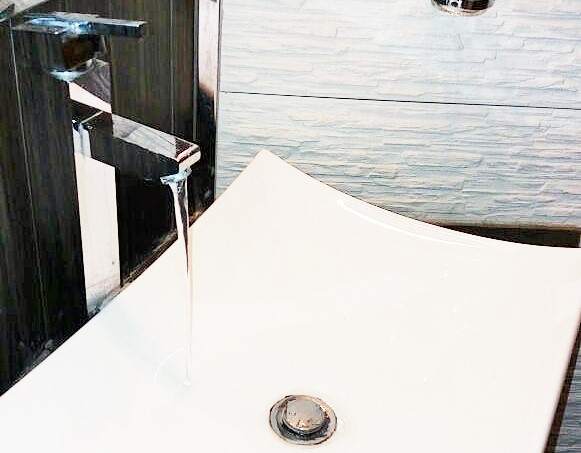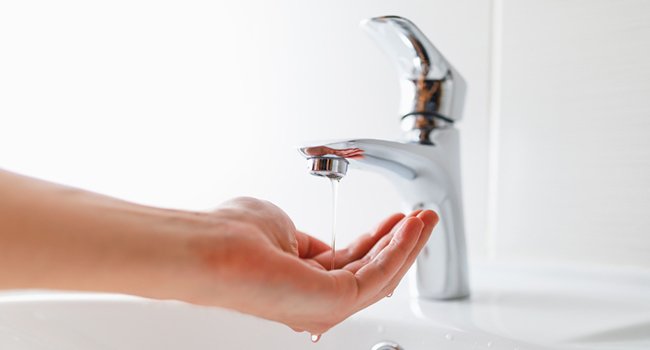Trusted Approaches for Addressing Low Water Pressure in Your Home
Trusted Approaches for Addressing Low Water Pressure in Your Home
Blog Article
We have come across the article relating to Dealing with Low Water Pressure in Your Home listed below on the web and thought it made good sense to talk about it with you over here.

Low tide stress in your house can be an irritating trouble, affecting whatever from showering to washing recipes. If you're experiencing weak water circulation, there are a number of feasible reasons and options to discover. In this guide, we'll go over typical reasons for low water pressure and sensible steps to deal with the concern effectively.
Intro to Low Tide Stress
Low tide pressure happens when the circulation of water from your taps, showers, and various other fixtures is weaker than common. This can make daily tasks extra tough and much less efficient. Recognizing the root causes of low water pressure is essential to finding the best solution.
Usual Sources Of Low Tide Pressure
Faulty Stress Regulators
Stress regulators are in charge of keeping consistent water pressure in your house. If they malfunction, it can result in low water stress or irregular flow throughout the house.
Municipal Water Issues
Occasionally, the problem lies outside your home. Municipal supply of water concerns, such as main line leaks or upkeep job, can momentarily minimize water pressure in your location.
Pipeline Obstructions
In time, pipelines can come to be obstructed with mineral deposits, sediment, or particles, limiting the flow of water. This is a common concern in older homes with galvanized steel pipelines.
Corrosion
Corrosion within pipelines can lead to leaks and lowered water pressure. Corrosion build-up can restrict water circulation, particularly in maturing plumbing systems.
How to Identify Low Water Pressure
Inspecting Pipes
Check noticeable pipelines for indications of leaks, deterioration, or blockages. Pay attention to any type of uncommon audios, such as knocking or rattling pipes, which could show issues within the plumbing system.
Consulting with a Plumber
If you're incapable to identify the source of low water stress, think about employing an expert plumber to conduct a comprehensive assessment. They can determine underlying concerns and suggest proper services.
Examining Faucets and Components
Start by checking the water stress at different faucets and components throughout your home. If the problem is isolated to details areas, it may suggest local problems.
Do It Yourself Solutions to Take Care Of Low Water Stress
Flushing Hot Water Heater
Debris buildup in the hot water heater can restrict circulation and decrease effectiveness. Flushing the container periodically helps eliminate sediment and preserve optimum performance.
Checking Stress Regulatory Authority
Ensure that the pressure regulator is operating appropriately. Adjusting or changing the regulatory authority can help restore appropriate water stress throughout your home.
Cleaning Up Aerators and Showerheads
Natural resources can build up in aerators and showerheads, minimizing water flow. Get rid of and clean these parts frequently to improve water pressure.
Cleaning Clogs in Water Lines
For small clogs, try making use of a plumbing serpent or chemical drain cleaner to clear obstructions in pipelines. Beware when making use of chemicals and follow safety standards.
When to Call a Specialist Plumber
If do it yourself efforts fail to fix the concern or if you think considerable plumbing troubles, it's best to look for aid from a certified plumber. They have the know-how and tools to resolve complicated problems safely and efficiently.
Preventive Measures to Maintain Water Stress
Installing a Pressure Booster
Take into consideration setting up a pressure booster pump to enhance water stress in areas with continually low flow. This can be specifically helpful for multi-story homes or buildings with high-demand components.
Tracking Water Usage
Be mindful of water usage practices and prevent overtaxing the plumbing system. Basic changes, such as shocking showers and laundry loads, can assist preserve adequate water pressure.
Routine Upkeep
Arrange regular upkeep for your plumbing system to avoid concerns such as deterioration, leakages, and blockages. Attending to minor troubles early can assist stay clear of even more substantial repair work in the future.
Conclusion
Dealing with low tide pressure can be irritating, yet recognizing the underlying reasons and implementing proper solutions can restore optimal flow throughout your home. Whether it's cleansing aerators, inspecting pipelines, or talking to a plumber, taking positive steps can ensure a steady supply of water for your everyday demands.
FOUR WAYS TO FIX LOW WATER PRESSURE NOW
Turning on a shower or faucet only to find the water comes out in a sad, slow drizzle is never a good feeling. How exactly are you supposed to wash a pan or take a quick shower when it takes 10 minutes just to rinse off a little soap? The good news is that when your water pressure is bad, there's always a cause: typically one that can be easily fixed. Here are some of the most common causes of low pressure and what you can do to fix the issue:
DEBRIS AND MINERAL DEPOSIT BUILDUPS
If you notice low water pressure from just one or two of the fixtures in your house, the problem likely has to do with debris buildup. Water is full of minerals and other debris, all of which can accumulate in your pipes and on your fixtures. This can cause a blockage that affects how much water flows through. To fix this, try filling a small plastic bag with white vinegar, and use a rubber band to hang it around your showerhead or faucet. Let the head of the fixture soak for a few hours, and the vinegar should loosen the deposits.
WATER LEAKS
Leaks are another common cause of low water pressure. If water is flowing out of your plumbing through a hole or crack before it can reach your fixture, the pressure coming out of the faucet or showerhead will be lower. A plumbing professional is your best bet for finding and repairing a leak in your water supply pipes.
Leaks are another common cause of low water pressure. If water is flowing out of your plumbing through a hole or crack before it can reach your fixture, the pressure coming out of the faucet or showerhead will be lower. A plumbing professional is your best bet for finding and repairing a leak in your water supply pipes.
A VALVE ISSUE
If you have low water pressure throughout your home, check your main shut-off valve to make sure it's completely open. You may also want to see if there's a pressure-reducing valve installed. If there is, have a plumber help you adjust the settings to get the pressure you're looking for.
OTHERS USING WATER
Believe it or not, your low water pressure could be caused by your neighbors. If you notice low pressure at certain times of day, it may be because you and the people living next to you have similar schedules - when everyone is showering at the same time, the pressure will be lower in every home. Low pressure throughout the neighborhood may also be caused by an issue with your municipal water supply. If that's the case, call the supplier to see if they're working on the issue.
https://www.rotorooter.com/blog/water-leaking/low-water-pressure-fixes/

Hopefully you enjoyed our part about 10 Reasons for Low Water Pressure in Your House. Thank you for finding the time to browse our blog. For those who enjoyed reading our post please make sure you remember to share it. Thank you for being here. Revisit us soon.
Give Me A Quote! Report this page